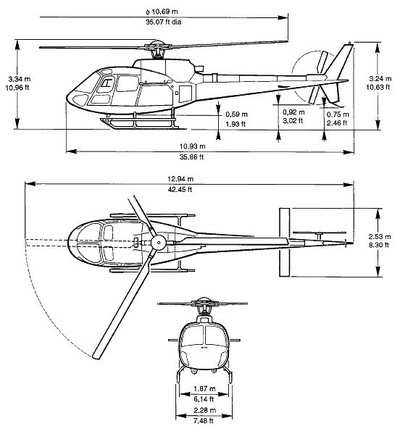Pilot Had Been Taking Medications For A Sleep Disorder Not Reported To The FAA
The NTSB has released a factual report from an accident near Kingfisher, OK, involving an EagleMed Eurocopter AS350 B2 helicopter that was on its way to pick up a patient. The accident resulted in the fatal injury of the pilot, Al Harrison, and nurse Ryan duke. A second paramedic who was also on board the aircraft survived, and initiated a 911 call after the accident.

According to the factual report, the surviving paramedic flight nurse said during an interview with the NTSB that he recalled that during the flight to Okeene, the left side door had come unlatched and was slightly ajar (about one-half inch). The paramedic informed the pilot that he was getting out of his seat to close the door and secure the handle. The pilot acknowledged the paramedic. After securing the handle, the paramedic stated that he had sat back down and begun to gather his seatbelt when a conversation began about another pilot flying on a coyote hunt. The paramedic reported that the pilot made a statement similar to “like this… (with some laughter)” and made a nose down control input. He reported that the pilot pulled up on the collective and the helicopter struck a tree. During the ground impact, the paramedic, who was not secured in his seat, was thrown through the windscreen; the paramedic crawled away from the wreckage and dialed 911 on his cell phone.
The pilot, age 56, held a commercial pilot certificate for airplane single engine land, instrument airplane, rotorcraft-helicopter, and instrument helicopter. He held a second class medical certificate issued February 8, 2010. On the pilot’s last application for a medical certificate the pilot reported having accumulated 12,241 hours, with 119 hours logged with the preceding six months. Of note, the pilot reported that he was not currently using any medications.

A review of the pilot’s medical history found that the pilot was being treated for several medical conditions and had been prescribed multiple medications since at least 2007. In April 23, 2007, the pilot reported to his personal physician that he had bronchitis, hypertension, and sleep apnea, and after his visit, he was prescribed the following medications: Nexium (for gastroesophageal reflux), Caduet (for hypertension), Flexeril (sedating muscle relaxant), Lortab (hydrocodone and acetaminophen; narcotic pain medication), Lunesta (for sleep disturbance), and Requip (for restless leg syndrome). The pilot continued to report to his personal physician that he experienced increased pain and was prescribed stronger pain medications, to include prescription narcotics and benzodiazepines. In addition, steroid joint injections were applied to his right knee and shoulder to treat persistent pain. The last documented visit, February 25, 2010, the pilot was prescribed the following: Caduet (for
hypertension), omeprazole (for gastroesophageal reflux); Meloxicam (a non-steroidal anti-inflammatory); Lunesta (sleep aid); Norco (10/325 hydrocodone/acetaminophen combination two tablets three times a day); baclofen (a muscle relaxant, 10 mg three times a day) and Valium (diazepam, a benzodiazepine, 10 mg three times a day). In addition to his prescribed medications, chlorpheniramine, an over-the-counter sedating antihistamine medication was also detected in the toxicology. There was no evidence that the pilot’s sleep apnea had been treated prior to the accident. In addition, the pilot did not report any of his conditions and prescription medications to the FAA, to the certificate holder, or to the operator. Several of the medications were detected in the pilot's blood during an autopsy.
The report indicates that no pre-impact anomalies were found with the aircraft during the course of the investigation.
(Eurocopter AS350 B2 image from file.)
 Airbus Racer Helicopter Demonstrator First Flight Part of Clean Sky 2 Initiative
Airbus Racer Helicopter Demonstrator First Flight Part of Clean Sky 2 Initiative Diamond's Electric DA40 Finds Fans at Dübendorf
Diamond's Electric DA40 Finds Fans at Dübendorf ANN's Daily Aero-Term (04.23.24): Line Up And Wait (LUAW)
ANN's Daily Aero-Term (04.23.24): Line Up And Wait (LUAW) NTSB Final Report: Extra Flugzeugbau GMBH EA300/L
NTSB Final Report: Extra Flugzeugbau GMBH EA300/L Classic Aero-TV: 'Never Give Up' - Advice From Two of FedEx's Female Captains
Classic Aero-TV: 'Never Give Up' - Advice From Two of FedEx's Female Captains




